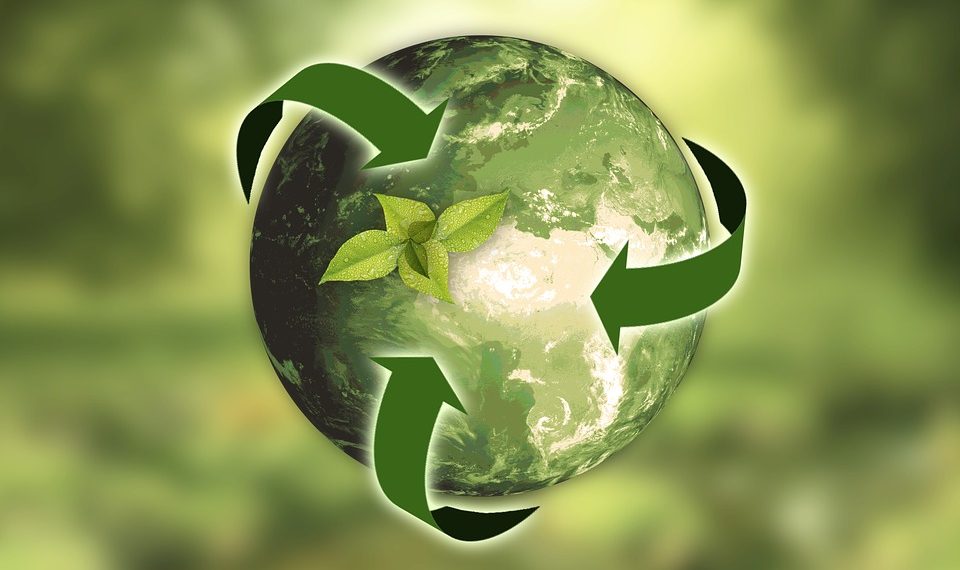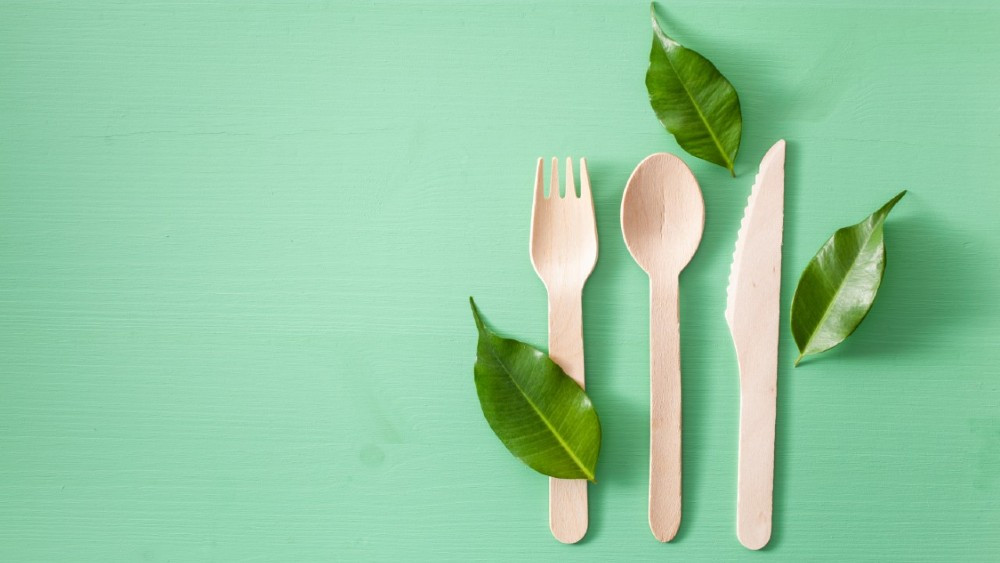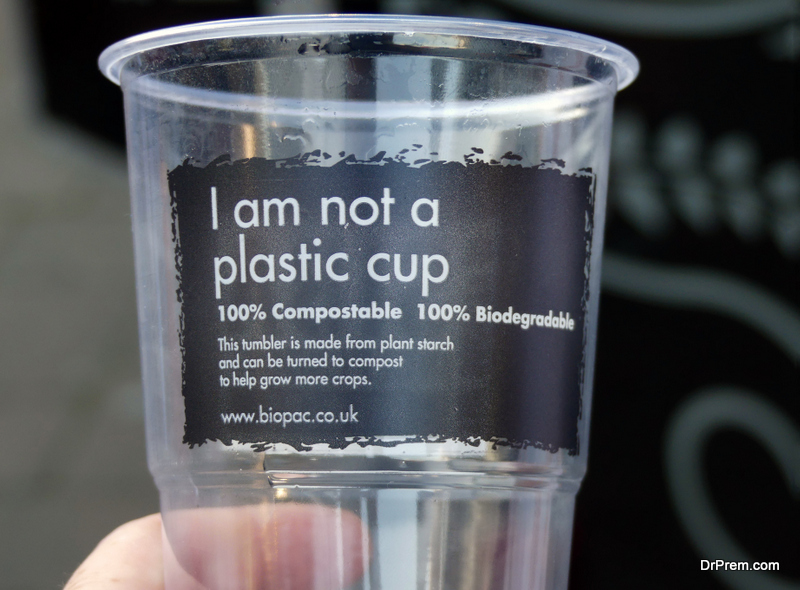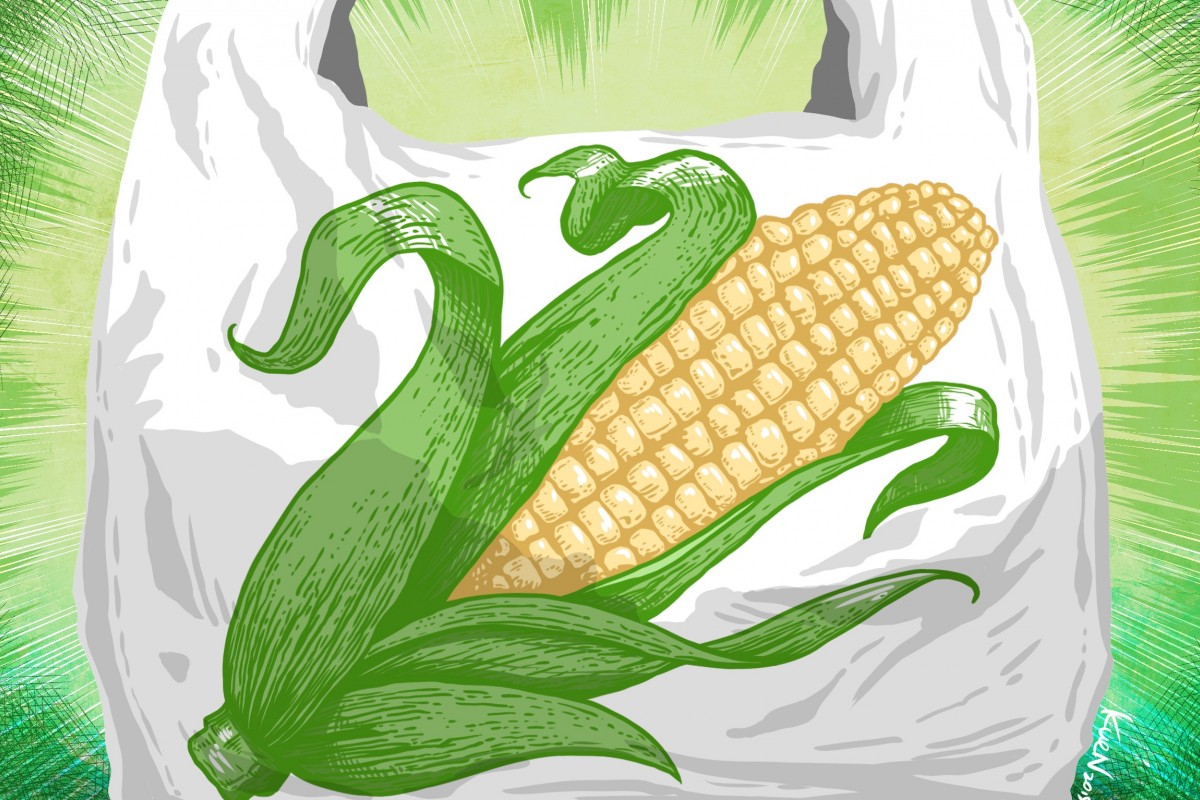Better Touch Better Business
Contact Sales at XINCHUANG BIO.
Competitiveness analysis and development prospect forecast of degradable plastics industry in 2020

降解塑料是指一类其制品的各项性能可满足使用要求,在保存期内性能不变,而使用后在自然环境条件下能降解成对环境无害的物质的塑料。因此,也被称为可环境降解塑料。现在有多种新型塑料:光降解型塑料、生物降解型塑料、光、氧化\生物全面降解性塑料、二氧化碳基生物降解塑料、热塑性淀粉树脂降解塑料。中国的可降解塑料经历了30年的发展,目前,我国是全球唯一可以生产所有生物可降解塑料产品种类的国家,各个品种的产品研究也处于世界前列,而且近年来产能扩张迅速。
Degradable plastics refer to a kind of plastics whose properties can meet the requirements of use, remain unchanged during the storage period, and can degrade harmless substances in the natural environment after use. Therefore, it is also called environmental degradable plastics. Now there are a variety of new plastics: photodegradation plastics, biodegradable plastics, light, oxidation / biodegradable plastics, carbon dioxide based biodegradable plastics, thermoplastic starch resin degradable plastics. China's degradable plastics have experienced 30 years of development. At present, China is the only country in the world that can produce all kinds of biodegradable plastics products. The product research of various varieties is also in the forefront of the world, and the production capacity has expanded rapidly in recent years.

塑料在给人们带来方便的同时,也带来极大的环境污染。20世纪50年代以来,全球共生产约83亿吨塑料,其中63亿吨已成为塑料垃圾。目前每年仍有超过1亿吨白色垃圾产生。由于塑料制品的原料―高分子树脂具有极强稳定性,在自然环境状态下需几百年才能降解,降解过程不仅占用大量土地资源,也会对水体、空气造成污染,白色垃圾污染问题已经引起各国的高度重视。塑料按照降解方式可分为不可降解塑料和可降解塑料。可降解塑料是指各项性能可满足使用要求,在保存期内性能不变,而使用后在自然环境条件下能降解成对环境无害物质的塑料,也被称为可环境降解塑料。不可降解塑料则指无法或者很难通过微生物降解的塑料,它们往往在自然界中经过上百年才能被缓慢降解。可降解塑料在性能、实用性、降解性、安全性上都有其优势。在性能上,可降解塑料可以达到或在某些特定领域超过传统塑料的性能;在实用性上,可降解塑料有与同类传统塑料相近的应用性能和卫生性能;在降解性上,可降解塑料在使用后,可以在自然环境下(特定微生物、温度、湿度)较快完成降解,并成为易被环境利用的碎片或无毒气体,减少对环境的影响;在安全性上,可降解塑料降解过程产生或残留的物质对环境无害,不会影响人类和其他生物的生存。而目前替代传统塑料的最大阻碍,也是可降解塑料的缺点是其生产成本较同类传统塑料或再生塑料高。因此,在包装、农膜等使用时间短、难以回收分离、对性能要求不高、对杂质含量要求高的应用领域,可降解塑料更具替代优势。
Plastics not only bring convenience to people, but also bring great environmental pollution. Since the 1950s, the world has produced about 8.3 billion tons of plastics, of which 6.3 billion tons have become plastic waste. At present, more than 100 million tons of white garbage are still produced every year. As the raw material of plastic products polymer resin has strong stability, it takes hundreds of years to degrade in the natural environment. The degradation process not only takes up a lot of land resources, but also pollutes water and air. The problem of white garbage pollution has attracted the attention of many countries. Plastics can be divided into non degradable plastics and degradable plastics according to their degradation modes. Degradable plastics refer to the plastics whose properties can meet the use requirements and remain unchanged during the storage period, but can degrade the environmentally harmless substances in the natural environment after use, also known as environmentally degradable plastics. Non degradable plastics refer to plastics that cannot or are difficult to be degraded by microorganisms. They are usually degraded slowly in nature for hundreds of years. Degradable plastics have their advantages in performance, practicability, degradability and safety. In terms of performance, degradable plastics can reach or surpass the performance of traditional plastics in some specific fields; in terms of practicability, degradable plastics have similar application and sanitary properties with similar traditional plastics; in terms of degradability, degradable plastics can be degraded quickly in natural environment (specific microorganisms, temperature and humidity), and become easily environmental friendly In terms of safety, the substances produced or remained in the degradation process of degradable plastics are harmless to the environment and will not affect the survival of human beings and other organisms. At present, the biggest obstacle to replace traditional plastics is that the production cost of degradable plastics is higher than that of similar traditional plastics or recycled plastics. Therefore, degradable plastics have more alternative advantages in packaging, agricultural film and other application fields, such as short service time, difficult recovery and separation, low performance requirements and high impurity content requirements.

近期国家发改委、生态环境部印发《关于进一步加强塑料污染治理的意见》,提出要按照“禁限一批、替代循环一批、规范一批”的思路,推进三项主要任务。其中“禁限一批”包括“分步骤、分领域禁止或限制使用不可降解塑料袋、一次性塑料制品、快递塑料包装等”。从政策可以看出,可降解塑料市场空间巨大,而天壮环保一直被市场集体看好。白色污染中59%来自包装和农膜塑料制品,而这类用途的塑料一次性、难回收的特点不适合塑料再生利用,唯有可降解塑料可以根本性解决白色污染问题。2018年全球塑料需求量达到3.59亿吨,其中包装塑料需求量达到1.44亿吨,可降解塑料的替代市场空间巨大。全球生物降解塑料需求量呈较快增长趋势。2014年生物降解塑料需求130万吨,预计到2020年将达到322万吨,年均增长率达到16.7%。其中欧洲需求量最大,占比达31%,北美和中国占比分别为28%和20%。我国是全球唯一可以生产所有生物降解塑料产品的国家,近年来产能扩张迅速。2018年我国生物降解塑料行业规模约54.4亿元,同比增长21.1%。2018年产量达65万吨,同比增长10.2%,其中完全生物降解塑料产量约9.5万吨,破坏性生物降解塑料产量约55.5万吨。我国外卖订单量近两年呈现井喷式增长,2018年我国互联网餐饮外卖市场订单量达到109.6亿单,同比增长96.8%。与此同时也带来了一次性餐具使用量的急速增加。一份外卖的塑料包装材料包括塑料袋、塑料碗、塑料汤勺和塑料汤杯,目前基本都使用聚苯乙烯、聚丙烯、聚氯乙烯等石油基高分子塑料。根据测算,单个塑料碗和塑料饭盒的重量基本在40g-60g,环保组织“自然大学”调研发现,每份外卖平均消耗3.27个餐盒,大约产生160g塑料,按照2018年110亿外卖订单量计算,共消耗一次性餐具塑料约176万吨,考虑到外卖订单数量的强劲增长,未来外卖产生的一次性塑料餐具数量将十分巨大。随着一次性餐盒使用量的迅速上升,这一问题受到了人们越来越多的关注,2017年6月,美团外卖、中国烹饪协会、中华环境保护基金会曾与多家餐饮外卖品牌共同发起《绿色外卖行业公约(绿色十条)》,其中就有“推动使用绿色餐具”的相关内容。2017年10月,国家食品药品监督管理总局发布《网络餐饮服务食品安全监督管理办法》中特别提到,鼓励网络餐饮服务第三方平台提供者提供可降解的食品容器、餐具和包装材料。上述新办法自2018年1月1日起施行。
Recently, the national development and Reform Commission and the Ministry of ecological environment issued the opinions on Further Strengthening the control of plastic pollution, proposing to promote three main tasks in accordance with the idea of "banning one batch, substituting one batch, and standardizing one batch". Among them, "prohibition and restriction on one batch" includes "prohibition or restriction on the use of non degradable plastic bags, disposable plastic products, express plastic packaging, etc. step by step and in different fields". It can be seen from the policy that there is a huge market space for degradable plastics, while Tianzhuang environmental protection has always been favored by the market. 59% of the white pollution comes from the packaging and agricultural plastic products. The disposable and difficult recycling characteristics of this kind of plastic are not suitable for plastic recycling. Only degradable plastics can fundamentally solve the problem of white pollution. In 2018, the global demand for plastics will reach 359 million tons, including 144 million tons for packaging plastics. There is a huge space for the replacement market of degradable plastics. The global demand for biodegradable plastics is increasing rapidly. In 2014, the demand for biodegradable plastics is 1.3 million tons, which is expected to reach 3.22 million tons by 2020, with an average annual growth rate of 16.7%. Among them, Europe has the largest demand, accounting for 31%, North America and China account for 28% and 20% respectively. China is the only country in the world that can produce all kinds of biodegradable plastics products. In recent years, the production capacity has expanded rapidly. In 2018, the scale of China's biodegradable plastics industry was about 5.44 billion yuan, with a year-on-year increase of 21.1%. In 2018, the output reached 650000 tons, with a year-on-year increase of 10.2%, including 95000 tons of fully biodegradable plastics and 555000 tons of destructive biodegradable plastics. In the past two years, the number of foreign sales orders in China has shown a blowout growth. In 2018, the number of orders in China's Internet catering delivery market reached 10.96 billion, with a year-on-year growth of 96.8%. At the same time, it also brought the rapid increase of disposable tableware. The plastic packaging materials for a takeaway include plastic bags, plastic bowls, plastic spoons and plastic soup cups. At present, petroleum based polymer plastics such as polystyrene, polypropylene and polyvinyl chloride are basically used. According to the calculation, the weight of a single plastic bowl and plastic lunch box is about 40g-60g. According to the survey conducted by the environmental protection organization "natural University", each takeout consumes 3.27 lunch boxes on average, generating about 160g of plastic. According to the 11 billion takeout orders in 2018, the total consumption of disposable tableware plastic materials is about 1.76 million tons. Considering the strong growth in the number of takeout orders, the disposable plastic produced by takeout in the future The amount of cutlery will be huge. With the rapid increase in the use of disposable lunch boxes, this issue has attracted more and more attention. In June 2017, meituan takeout, China Cuisine Association, and China Environmental Protection Foundation jointly launched the green takeout industry convention (Green 10) with several catering takeaway brands, including the related content of "promoting the use of green tableware". In October 2017, the State Food and Drug Administration issued the food safety supervision and management measures for online catering services, which also specifically mentioned that the third-party platform providers of online catering services were encouraged to provide degradable food containers, tableware and packaging materials. The above-mentioned new measures will come into effect on January 1, 2018.

目前生物降解材料成本较高,需要有政策和企业推动,外卖行业类似快递行业,属于寡头竞争行业,有望充分利用政策和平台的优势对商家进行生物降解塑料的推广。我们依据各省市禁塑政策执行时间表和执行力度,以及海外可降解塑料发展历程,预测了我国未来10年可降解塑料的需求变化。到2025年,预计我国可降解塑料需求量可到238万吨,市场规模可达477亿元;到2030年,预计我国可降解塑料需求量可到428万吨,市场规模可达855亿元。我国可降解塑料市场空间巨大。随着《环境保护法》、《中共中央国务院关于加快推进生态文明建设的意见》《“健康中国2030”规划纲要》、《生态环境保护规划》等一些列环保政策的出台,环境污染越来越受到社会的关注,作为白色污染的主要来源,生物可降解塑料将迎来发展的拐点,我们预计2018-2023年中国生物可降解塑料市场将得到全面爆发,预计2023年中国国内生物可降解塑料消费量将超过6.7万吨。
At present, the cost of biodegradable materials is high, which needs to be promoted by policies and enterprises. The takeout industry is similar to the express delivery industry and belongs to an oligopoly competitive industry. It is expected to make full use of the advantages of policies and platforms to promote biodegradable plastics for businesses. Based on the implementation schedule and intensity of the plastic ban policy in various provinces and cities, as well as the development history of overseas degradable plastics, we forecast the demand change of degradable plastics in China in the next 10 years. By 2025, it is estimated that the demand for degradable plastics in China will reach 2.38 million tons, and the market scale will reach 47.7 billion yuan; by 2030, the demand for degradable plastics in China will reach 4.28 million tons, and the market scale will reach 85.5 billion yuan. There is a huge market space for degradable plastics in China. With the promulgation of environmental protection law, the opinions of the CPC Central Committee and the State Council on accelerating the construction of ecological civilization, the outline of "healthy China 2030" planning, and the ecological environment protection plan, environmental pollution has been paid more and more attention by the society. As the main source of white pollution, biodegradable plastics will usher in the turning point of development In 2018-2023, China's biodegradable plastics market will break out in an all-round way. It is estimated that China's domestic consumption of biodegradable plastics will exceed 67000 tons in 2023.

可降解塑料因其有更稳定的性能和更低的回收成本,在包装、农膜等使用时间短、难以回收分离的应用领域更具有替代优势;而再生塑料因为有更低的价格和制作成本,在生活用具、建筑材料、电器等使用时间长、易于分类回收的应用场景更具有优势,两者相得益彰。白色污染主要来源于包装领域,可降解塑料的发挥空间更大,随着政策推动和成本降低,未来可降解塑料市场前景广阔
Due to its more stable performance and lower recycling cost, degradable plastics have more alternative advantages in packaging, agricultural film and other application fields, which are difficult to be recycled and separated; while recycled plastics have more advantages in the application scenarios of living appliances, building materials, electrical appliances with long service time and easy classification and recycling because of its lower price and production cost Zhang. White pollution mainly comes from the packaging field, and degradable plastics have more space to play. With the promotion of policy and the reduction of cost, the market prospect of degradable plastics is broad in the future.

Copyright © 2019 XINCHUANG BIO | All Rights Reserved
Welcome to our website! Please leave your email address for further contact. For more information, plz kindly message: xcbio766@xcbio.com